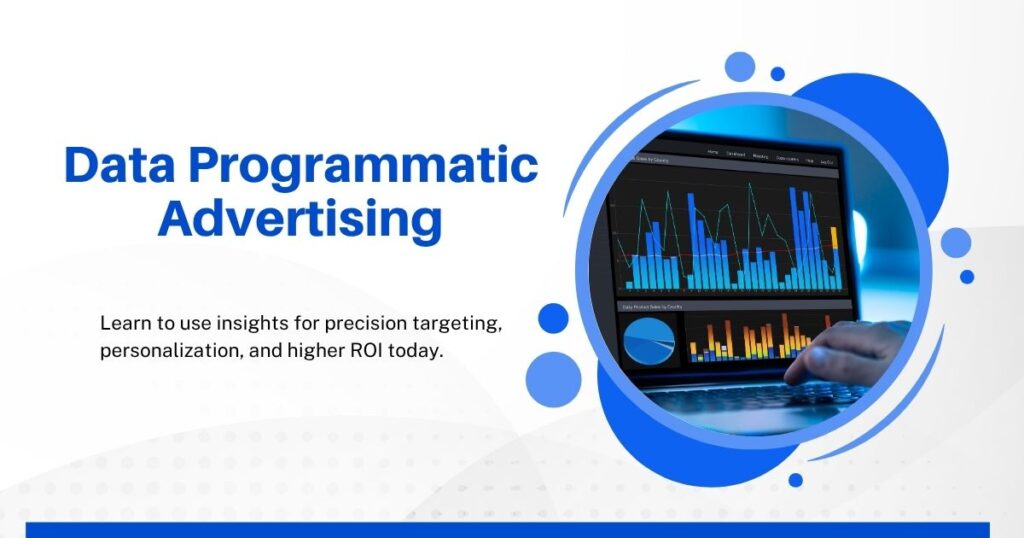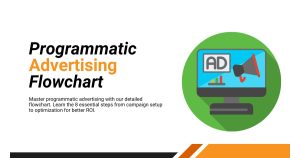Unlocking the Power of Data in Programmatic Advertising

Data is the fuel that drives programmatic advertising. It empowers brands to deliver precision-targeted campaigns, reach the right audience, and achieve higher return on investment (ROI). But with so much data available, are advertisers truly taking full advantage of its potential?
This blog will explore how data transforms programmatic advertising, the types of data used, and actionable ways businesses can optimize its use to maximize campaign performance. Whether you’re a marketing professional or exploring programmatic advertising for the first time, this guide will help you unlock the immense power of data.
What Programmatic Advertising Means Today
Programmatic advertising is the automated buying and selling of online ad space using software. Unlike manual ad buying, programmatic relies on data and algorithms to deliver highly targeted ads in real-time.
Key advantages of programmatic include:
- Precision targeting by leveraging audience demographics, interests, and behaviors.
- Speed through automated, real-time bidding (RTB).
- Cost-efficiency by reducing wasteful spend on mismatched audiences or irrelevant placements.
But the backbone of programmatic’s effectiveness is data. Without it, even the most sophisticated algorithms fall flat.
Why Data is Critical for Programmatic Success
Data transforms programmatic advertising from simple ad placement into a dynamic, audience-centric solution. Here’s how:
- Personalization: Marketers can tailor ad copy, creatives, and offers based on individual preferences.
- Better Decision-Making: Data analytics identifies high-performing channels and optimizes spending accordingly.
- Improved ROI: Access to audience insights minimizes ad spend waste, ensuring money is invested in highly targeted, conversion-friendly opportunities.
When used effectively, data is the differentiator between generic ads and campaigns that resonate.
Types of Data in Programmatic Advertising
Understanding the types of data available is the first step to harnessing its power. Here’s a breakdown of the most common categories:
First-Party Data
This is data collected directly by a brand from its customers. Examples include website behavior, purchase history, CRM records, and app interactions.
- Why It’s Valuable: First-party data is unique to your brand and often the most reliable source for identifying high-value customers.
- How It’s Used: Retargeting campaigns, loyalty programs, and personalized messaging.
Second-Party Data
This type of data is essentially another company’s first-party data that is shared or sold. For instance, a travel booking platform may share its audience data with a hotel brand.
- Why It’s Valuable: It allows advertisers to reach relevant audiences that align with their own but may not be in their direct database.
- How It’s Used: Building alliances with partner brands for joint targeting efforts.
Third-Party Data
Collected by external data providers, this information is aggregated from multiple sources. It includes demographic data, interests, and online behaviors.
- Why It’s Valuable: It significantly broadens targeting reach and enhances audience insights, especially when first-party data is limited.
- How It’s Used: Segmenting audiences and expanding market reach beyond core customers.
Contextual Data
This focuses on the context or environment where the ad will appear, including related content, page themes, or keywords.
- Why It’s Valuable: It aligns ads with relevant content, improving user experience and reducing negative sentiment.
- How It’s Used: To place ads on high-quality, non-sensitive content like blogs that match your product’s niche.
Real-Time Data
Collected in-the-moment, real-time data tracks live behaviors (e.g., active browsing or geolocation).
- Why It’s Valuable: Perfect for time-sensitive campaigns or action-driven goals (e.g., flash sales).
- How It’s Used: Triggering dynamic creatives or bidding for ad placements based on live user activity.
Understanding how to pull insights from these major sources is critical to executing a winning strategy.
Practical Ways to Use Data in Programmatic Advertising
Once you’re familiar with the data types available, it’s time to apply them strategically. Here’s how to make your campaigns smarter and more effective:
Create Dynamic Ads
Use programmatic platforms to create ads that change based on a user’s location, weather, or behavior. For example:
- A coffee chain might promote iced coffee ads to users in warm climates and hot coffee to those in colder regions.
- An online retail brand might show product recommendations based on recently browsed items.
Dynamic ads powered by data personalization see significantly higher click-through rates (CTR).
Leverage Lookalike Audiences
By analyzing first-party data, you can identify traits of your top customers and use programmatic platforms to find similar audiences. Known as lookalike targeting, this approach ensures you’re reaching new users who are more likely to engage and convert.
Precision Targeting Through Geofencing
Programmatic advertising allows hyper-local targeting using geofencing. Use real-time location data to engage consumers based on their physical proximity to your stores or events.
For example, a brand could serve discount ads to people within a one-mile radius of a retail location to drive foot traffic.
Optimize in Real-Time
A major benefit of programmatic is its adaptability. Monitor your campaigns and tweak targeting criteria, creatives, and bidding strategies based on real-time data insights.
Pro tip:
- Identify low-performing placements and reallocate the budget for better ROI.
- A/B test your creatives to determine which resonates most with your audience.
Retarget to Re-engage
Many users abandon carts or browse websites without taking action. Retargeting campaigns leverage first-party data to re-engage these users with tailored ads that nudge them toward conversion.
For instance:
- A travel site might show flight deals that a user was recently browsing.
- An e-commerce store could offer free shipping for an abandoned cart.
Enhance Contextual Ad Placement
By aligning your ads with content that complements your product, you deliver greater relevance. Target articles, videos, or websites that closely align with your industry or audience’s interests.
For example, a fitness brand could place ads on workout blog pages to reach users who are already interested in health.
Data Challenges in Programmatic Advertising
While data offers tremendous benefits, there are challenges marketers must address:
Privacy Concerns
With stricter data protection regulations such as GDPR and CCPA, businesses must prioritize consumer privacy. Ensure compliance by implementing transparent consent practices and using secure data-sharing methods.
Data Overload
Marketers often struggle to analyze and utilize the large volumes of data generated. Investing in the right tools or expertise ensures efficiency.
Accuracy Issues
Third-party data is sometimes less accurate compared to first-party sources. This can lead to mismatched targeting. Supplementing third-party data with your own trusted source can mitigate this risk.
By tackling these issues proactively, brands can continue to innovate while staying ahead of the competition.
Driving Results Through Smarter Data Use
Data in programmatic advertising is not just a tool but a strategic advantage. Brands that invest in quality data sources, establish efficient data analysis processes, and stay on top of emerging privacy trends position themselves as leaders in their industries.
By using data thoughtfully, you can:
- Generate hyper-personalized ad experiences.
- Reach niche audiences with precision.
- Maximize ROI by minimizing wasted efforts.
Programmatic advertising’s future is data-driven. Don’t get left behind.





